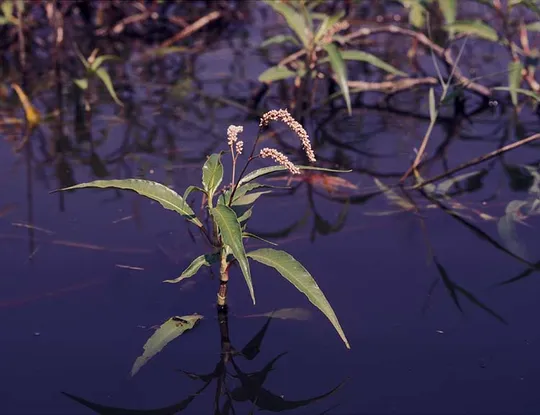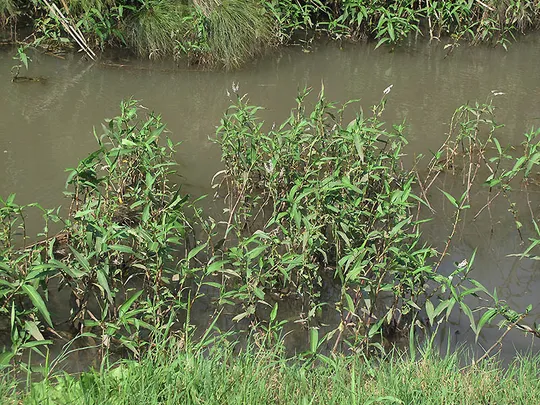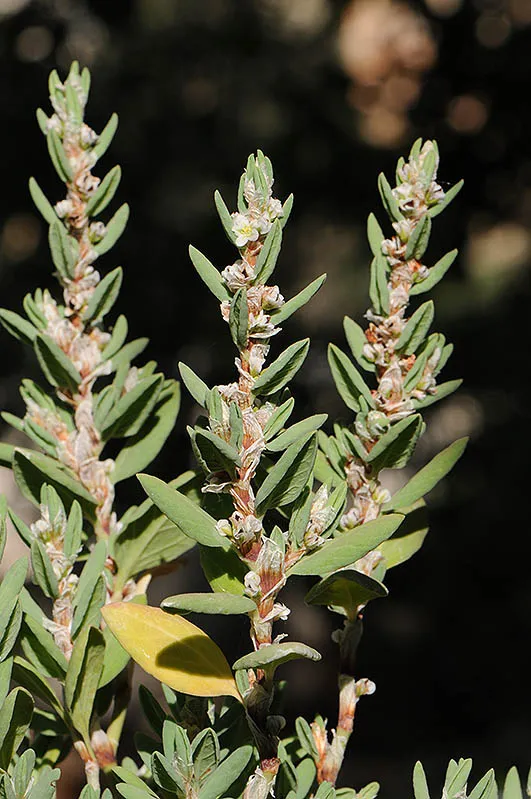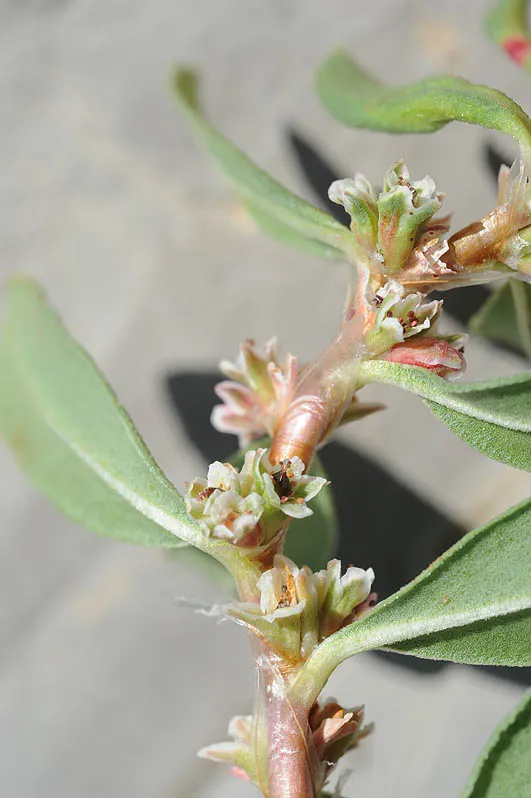Pink Knotweed, African Persicaria
Persicaria lanigera
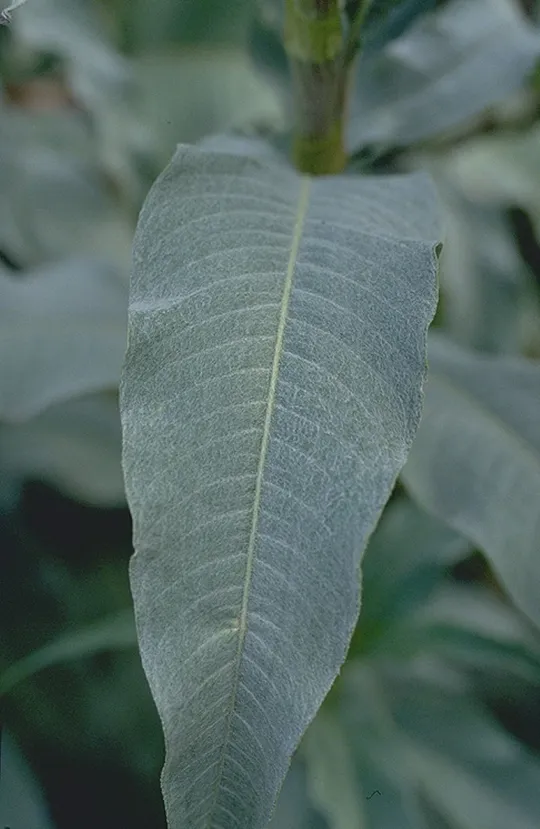
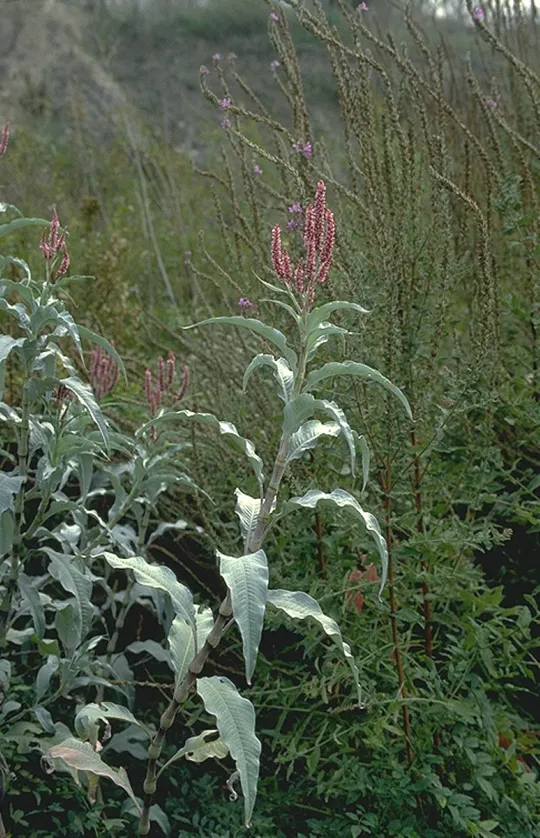
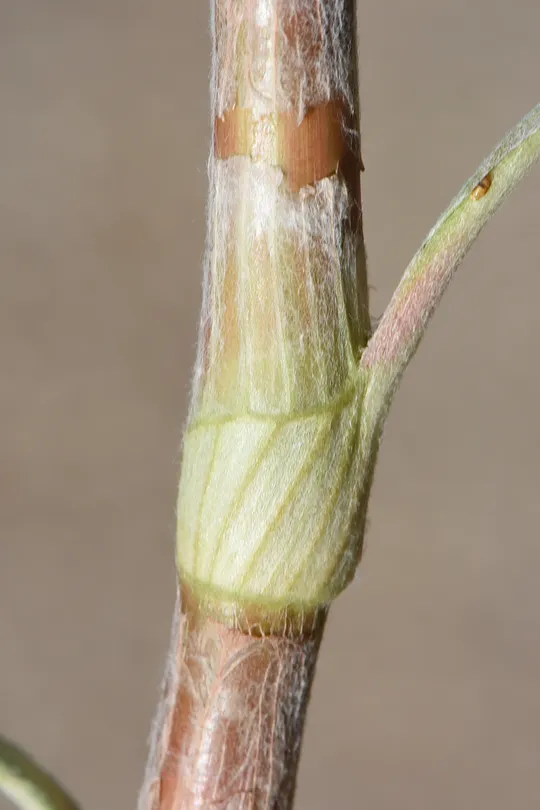
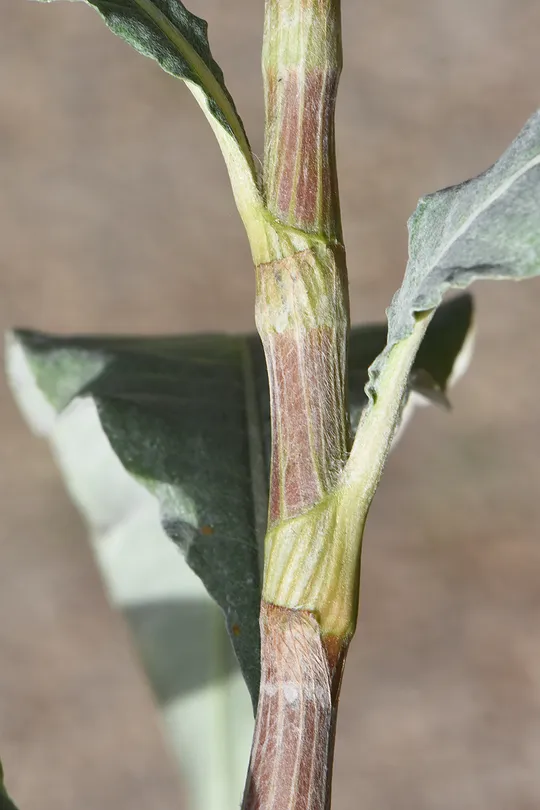
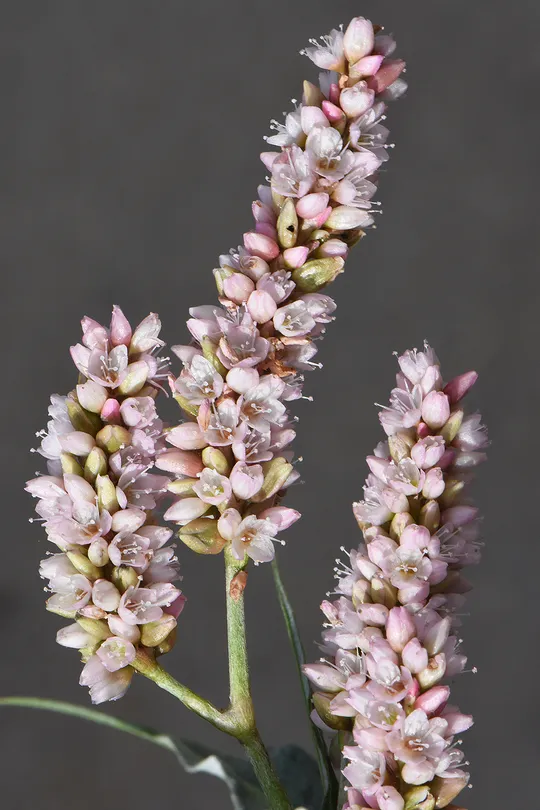
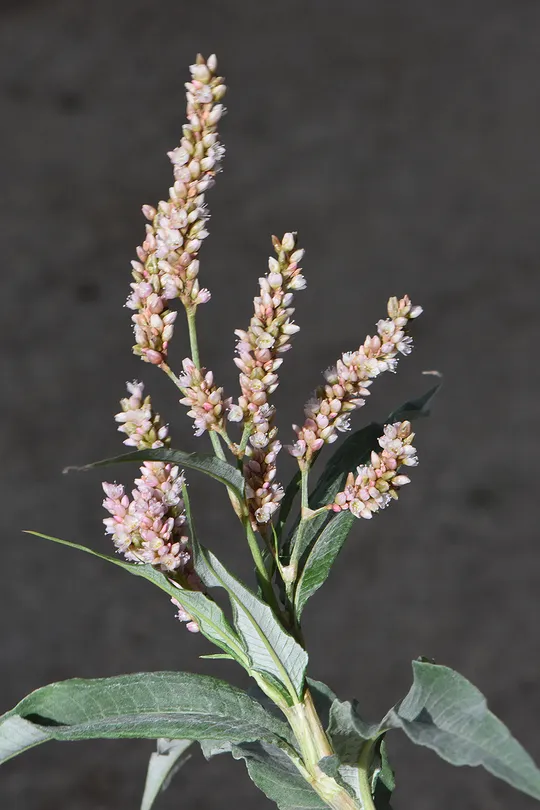
Persicaria lanigera is a large perennial dense shrub, 60 -130 cm tall. Its stems are upright or creeping, striking roots in the ground. The stem nodes are enveloped in a papery sheath with short curly teeth along its margin. The lanced leaves are very large, 12-14 cm long and 2-3 cm wide, with sharp edges. They are covered with dense hairs on both sides giving them a whitish appearance. The pink flowers, 3-4 mm, are arranged in dense spike-like inflorescence without no leaves in it. P. lanigera blooms in summer, from August to early October. This is the only aquatic Persicaria species whose leaves are hairy-whitish.
The root of Pesicaria lanigera is used in folk (alternative) medicine.
Pesicaria lanigera was previously known from six regions: the Golan, Hula Valley, Kinarot Valley, Acre Valley, Sharon and the Philistean Plain. The species is extinct in the Philistean Plain and currently grows in 5 regions. In the Golan it is found in the Botmia Reservoir and the Gilbon Stream. In the Hula Valley it was found at En Eli'ezer in 1982 and in the Jordan Gorge in 1994. In Lake Hula, a single shrub was found in 2005 (Talia Oron). In the Kinarot Valley, it grows in the Bet tsayda Reserve. In the Sharon it once grew in Ya'ar Pond (Birket Ata) (1926) and near Even Yehuda (1980), but the only population remaining today grows in the Wadi Poleg Marsh Nature Reserve and was discovered only in 1991. In the Philistean Plain P. lanigera is found in the city of Tel-Aviv (Wadi Ayalon, 1958?) and the lower section of Wadi Sorek (Rubin) (1962), but all efforts to find it again failed, and it is extinct in this region. A dense population was seen at the En Afek Nature Reserve in the Acre Valley in 2000-2003.
Marshes and banks of clean running water streams.
The genus Persicaria includes 150 cosmopolitan species, common in most continents of the world – in both tropical and temperate environments. These are mostly herbaceous perennials. A few species are cultivated as ornamentals in gardens; others are weeds that are hard to deal with. Some are partially submerged aquatic species.
The genus Persicaria includes three more broad-leaved species that inhabit wetlands: P. acuminata, P. decipiens and P. senegalensis, whose populations are rapidly becoming extinct.
Pesicaria lanigera and the three other Pesicaria species mentioned above are endangered in Israel due to wetland deterioration and severe pollution.
• Large, thriving populations of Pesicaria lanigera can be found almost exclusively in the Bet tsayda (Beteha) and Hula valleys. Formerly they grew in marshes and on the edges of coastal plain streams and in valleys. They are a good indication of water quality in open water bodies in Israel.
• In 2000-2003, a large population was observed at the En Afek Nature Reserve, covering an area of approximately 1/3 of a hectare. It disappeared for unknown reasons. Individual plants from it were transferred to the refuge at the ecological garden at the Technion and to the research center at the Hula Reserve.
• Pesicaria lanigera is apparently not globally endangered, due to its extensive geographic distribution in tropical wetlands.
Pesicaria lanigera should be monitored in the Bet tsayda Nature Reserve. Attempts should be made to restore it to one of the clean coastal streams – to the Yarkon Stream and Birket Ata.
Pesicaria lanigera is found in the Old World in many geographical regions: from Egypt via Sudan and all the countries of East Africa, and in Niger, Congo and Angola in Central Africa and in South Africa. In Asia, the species is found from India and to the east. It also appears in northern Australia. In the Middle East, all of West Asia and in the Mediterranean, Israel is the most northerly country in its range.
Pesicaria lanigera is a perennial herbaceous plant that forms a large, dense shrub, usually at the edges of water bodies. It was once more common in Israel, but many sites are now extinct following the destruction of aquatic habitats and their pollution. P. lanigera has become extinct from the Philistean Plain. This is a tropical plant, whose distribution in the country is peripheral and whose locations in Israel are the most northerly ones in the world. Conservation and rehabilitation of clean water bodies and restoration to sites where it grew in the past are the necessary steps needed to ensure the continued existence of the species in Israel.
Current Occupancy Map
| 1000 squre meter pixel | 5000 squre meter pixel | 10000 squre meter pixel | |
|---|---|---|---|
| number of observations | 0 | 0 | 0 |
| in total pixels | 0 | 0 | 0 |
| Family | Polygonaceae |
| Classification | On the endangered species list |
| Ecosystem | Mediterranean humid |
| Chorotype | Tropical |
| Conservation Site | Sfamnun Lagoon in Bet tsayda Valley |
| Rarity |
1
3
6
|
|---|---|
| Vulnerability |
0
3
4
|
| Attractiveness |
0
1
4
|
| Endemism |
0
0
4
|
| Red number |
1
4.2
10
|
| Peripherality | S |
| IUCN category | DD EW EX LC CR EN VU NT |
| Threat Definition according to the red book | Endangered |
 Based on:
Based on:
